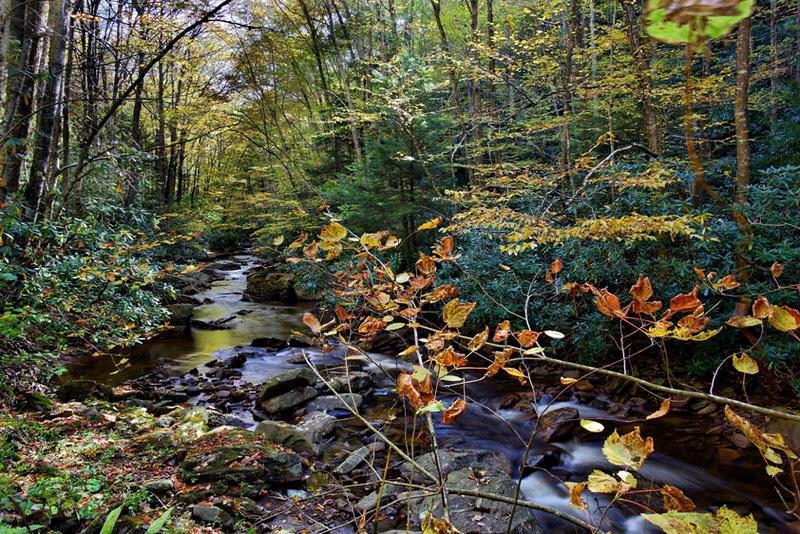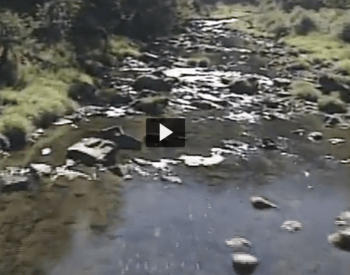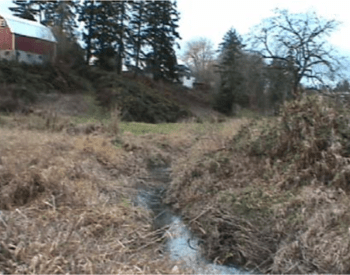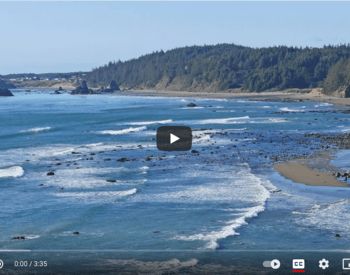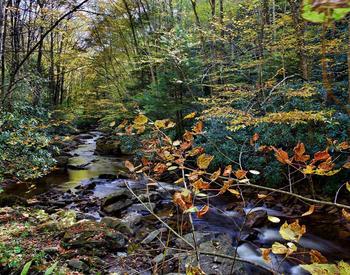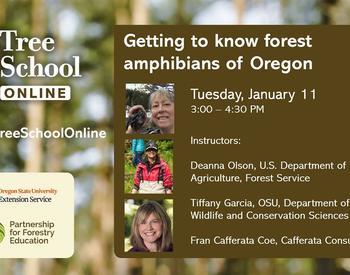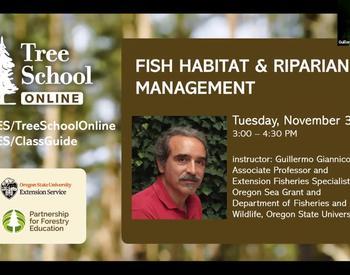Restoration and management
Riparian areas — wetlands, streambanks, creek beds, etc. — are characterized as transition zones that have high levels of diversity and productivity. These areas are important to the ecological success and health of humans, plants and animals in the region.
The complexity and diversity of riparian systems make a one-size-fits-all restoration or management plan difficult to create. Hydrology, climate, current and historic vegetation, animals, and disturbances all play a role when developing a management plan and implementing restoration strategies.
The first step for landowners is to identify and understand riparian area components such as vegetation, wildlife, land use, disturbances, soils, etc.
The next step is to identify strategies and objectives for the area, like planting or reinforcing riparian buffers, creating fences to limit grazing, prescribed burning, or the manual removal of invasive species can all be appropriate actions to take.
Landowners can find a list of helpful resources below.
Healthy riparian systems
Some quick and easy visual indicators of healthy creeks and streams include:
- A meandering channel with different sections of shallow, fast-moving water and deep, slow-moving water.
- An established floodplain (which may be hard to distinguish). An established floodplain is the area on either side of a water body that is subject to natural flooding regimes and helps to keep the excess water from negatively impacting other areas. If floodplains are removed or damaged, then excess erosion and water will occur and impact local ecosystems and infrastructure.
- Densely vegetated banks with a variety of plant species and heights.
Riparian buffers
Riparian buffers are the natural vegetation from the edge of the water body through the end of the riparian zone. Due to this characteristic, riparian buffers can be a variety of sizes that are managed to mitigate the impact of land-use management on riparian and aquatic systems. Well-designed riparian buffers will preserve healthy characteristics of the water body, improve habitat for wildlife, minimize erosion and absorb runoff.
Counties in the north coast of Oregon (including Clatsop, Tillamook and northern Lincoln) commonly experience flooding and erosion, especially on the steep slopes of the Coast Range. There, landowners can help mitigate the impacts of flooding by planting or retaining Sitka spruce (Picea sitchensis), a good salt- tolerant native species. Other good riparian buffer species include red twig dogwood (Cornus sericea) and willows (Salix); both species work well to mitigate erosion on steep slopes and banks.
Riparian buffers can also be supplemented with snowberry (Symphoricarpos albus) and ninebark (Physocarpus opulifolius) shrubs to further stabilize banks and mitigate flooding. All of these species are native to the region. It is highly recommended to reach out to local agencies or restoration organizations to learn more about the ecology of your land and to discuss the creation and implementation of management plans to best serve your goals.
Resources for landowners
Private landowners and managers need to care for the ecological health of their riparian areas because we know that ecological health impacts the economic, physical and mental health of our communities. Knowing how to care for our land and working to create effective and efficient management plans for these areas is critical for the healthy and resilient systems that will benefit us and future generations.
The resources and programs listed below can help you learn more about protecting natural areas and how you can get involved with restoration work on your own land.
State and federal
- Conservation Reserve Program (CRP): This program, funded through the Farm Service Agency (FSA), helps farmers and ranchers through technical assistance and cost-shares to improve water quality as well as reduce soil erosion and loss of wildlife habitat for land enrolled in 10- to 15-year contracts. There are also additional incentives for certain management practices, especially concerning riparian areas.
- Conservation Stewardship Program (CSP): This program assists landowners in establishing and furthering landowner conservation efforts while also strengthening farming and ranching operations.
- Environmental Quality Incentives Program (EQIP): This program provides financial and technical assistance to farmers, ranchers, and small landowners to address and improve natural resources concerns. These practices include research and implementation of riparian buffers, grazing systems, filter strips and more. There are also some additional incentives for certain management practices.
- Wetlands Reserve Program (WRP): This program provides technical and financial assistance to protect, restore, and enhance wetlands on their property. Lands eligible are farmed wetlands, converted croplands, pasture, riparian areas that link to wetlands and more. There are multiple options for easements, contracts and cost-shares if you are interested in this program.
- Wildlife Habitat Incentives Program (WHIP): This program provides technical and financial assistance for landowners to establish and improve fish and wildlife habitats on their property. Conservation plans are created for each property and agreements generally last between five and ten years.
- Wildlife Habitat Conservation and Management Program (WHCMP): WHCMP is focused on protecting, enhancing, and/or restoring wildlife habitats and populations on private lands. Interested landowners should call the local planning department to see if their land is eligible, and then develop a habitat conservation and management plan with a local agency or organization.
Regional
- Access and Habitat Program (A&H): A&H provides funding for public and private projects that improve wildlife habitat, hunting access, and/or solve wildlife problems. Examples of previous projects include riparian fencing, wetland habitat development, seasonal road management and more. Find contact information for state or regional resources.
- Oregon Watershed Enhancement Board (OWEB): OWEB is a state agency that provides grants to private landowners, organizations, and tribes to use scientific criteria to research and create management, conservation and restoration plans for local waterbodies. Its mission is to help protect and restore healthy watersheds and habitats that support communities and economies.
- Restoration and Enhancement Program (R&E): R&E is a grant program that funds fishery projects that benefit sport and commercial fishing. It aims to find a balance between restoration- and enhancement-type projects to fund.
- Riparian Lands Tax Incentive Program (RLTIP): RLTIP offers property tax incentives for private landowners to improve and/or maintain qualified riparian lands. Eligible riparian areas can include land up to 100 feet from a waterway. Interested landowners need to create a Riparian Management Plan with ODFW to receive property tax exemption for qualifying riparian lands.
- Water Conservation, Reuse, and Storage Grant Program: These grants, also known as feasibility study grants, were established to fund costs of studies that evaluate the feasibility of developing water conservation, reuse or storage projects. Eligible projects are those that appear to be promising but lack important details that are necessary to know how to proceed or implement the project.
- Western Oregon Stream Restoration Program (WORSP): WORSP provides direct technical support to private landowners and watershed councils to implement Oregon Plan measures for the restoration and enhancement of salmonid habitats. Projects include increasing habitat complexity and enhancing riparian areas. For more information, contact your nearest ODFW biologist.
- The Wetlands Conservancy: This organization is a leader in Oregon wetland conservation and aims to build partnerships with communities across the state to enhance and restore wetlands for current and future generations. It looks to collaborate with multiple partners to create a resilient and creative network that works to conserve Oregon’s wetlands.
Local
- Soil and Water Conservation Districts (SWCD) Directory
- Clatsop County SWCD
- Lincoln County SWCD
- Tillamook County SWCD
- Cooperative Weed Management Areas (CWMA) Directory
- Western Invasives Network
